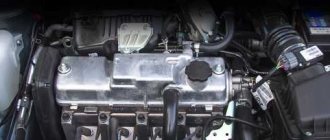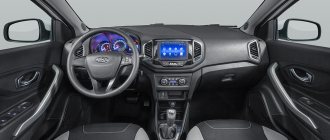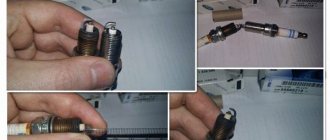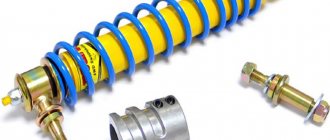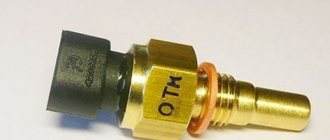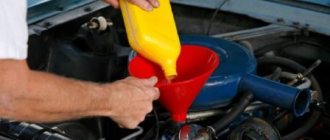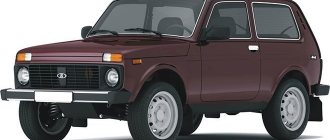September 15, 2016 Lada.Online 50 839 0
The Renault H4m engine is installed on the Lada XRAY with a continuously variable transmission (CVT or CVT) Jatco (previously installed with a manual transmission). The same engine with the name Nissan HR16 is installed on the Lada Vesta with the same transmission. Let's look at the technical characteristics of the HR16DE/H4M engine, its features and reviews from owners.
Characteristics
The H4M engine is a modified K4M powertrain. This was an evolutionary solution to a not entirely reliable and power-hungry power unit. Renault designers were given the task of making an unpretentious engine that is ideal for any region of use, and can also be installed on cars of different classes and purposes.
Unlike its predecessor, the gas distribution system uses a chain instead of a belt, but a significant drawback is the absence of hydraulic compensators. It is because of this that every owner must adjust the valves every 80,000 km. A large adjustment interval is achieved thanks to the presence of pushers.
The camshafts have also undergone changes. Thanks to this, it became possible to install two injectors on each cylinder. This significantly reduced consumption and increased environmental standards.
H4M engine - characteristics:
| Description | Characteristic |
| Manufacturer | Yokohama Plant Dongfeng Motor Company AvtoVAZ |
| Marking | Engine h4m hr16de |
| Release | 2006-2017 |
| Configuration | L4 |
| Number of cylinders | 4 |
| Timing mechanism | 16-valve (4 valves per cylinder) |
| Engine capacity | 1.6 liters (1598 cm3) |
| Piston diameter | 78 mm |
| Power characteristics | from 108 to 117 hp |
| Econorm | Euro 4/5 |
| Average consumption | 6.4 liters per 100 km |
| Resource | 250 according to the manufacturer |
Rules for operating the HR16DE engine
VAZ 11186 engine, technical characteristics and service life
Assessing the many advantages of this motor is possible only if a number of rules are followed for safe operation that matches its service life.
Let us briefly list these conditions, set out in detail in the operating instructions for the vehicle equipped with this internal combustion engine:
- Use of gasoline with an octane rating of at least AI-92;
- Use of high-quality motor oil of the classes specified in the operating instructions;
- Taking into account the realities, reducing the mileage between oil changes from 15 thousand km to 10 thousand km.
- Use of consumable spare parts (filters, spark plugs, fuses, lamps, consumable fluids, etc.) only with parameters corresponding to the technical characteristics of the engine;
- Timely completion of technical inspection and preventive maintenance with the participation of qualified specialists.
In its standard version, the HR16DE engine, also known as the H4M, is designed not for sports, but for measured driving in most modes of a modern city. Without making risky or critical changes to its design and software, you can be sure that the resource of this internal combustion engine of 250 thousand km, based on the experience of car enthusiasts, is not minimal.
Service
Most motorists carry out maintenance of the Renault power unit with their own hands. The simple design and familiar design make it easy to do all the necessary repairs yourself.
The service interval is 15,000 km. To increase the resource and extend the life of the engine, it is recommended to reduce the period to 12,000 km. The volume of motor lubricant in the power unit is 4.3 liters, but usually a 4-liter canister is sufficient for replacement. The recommended H4M engine oil is marked from 0W-30 to 15W-40. Nissan 5W-40 engine fluid is filled at the factory.
The oil filter is used by Nissan and has catalog numbers - 152085758R and 15208-65F0A. Also, using the original articles, you can select a sufficient number of analogues.
Maintenance scheme:
- TO-0. It is carried out from 1500 to 2000 km. The standard factory oil is changed, and all filters are also changed.
- TO-1. This is done after 12-15 thousand kilometers. Comprehensive maintenance of the entire power unit. From replacing consumables and oil to full diagnostics of the engine condition.
- TO-2. Replacement of lubricant, oil and fuel filter elements. Scanning for ECU errors. Troubleshoot if necessary.
- TO-3. In addition to standard operations, brake system diagnostics are added.
Subsequent maintenance is carried out by analogy with TO1 - TO3. As practice shows, most motorists undergo maintenance at dealer stations only during the warranty period. After the warranty service expires, car enthusiasts begin the maintenance process on their own. This allows you to save up to 2/3 of the monetary equivalent of the cost of operations in a car service center.
What cars was H4M installed on?
The H4M engine was harmoniously and rationally introduced into the creation of a large number of Nissan and Renault cars and was successfully adapted to each model.
The H4M engine has been installed in the Nissan Terrano III D10 since 2021.
This engine is installed in Nissan Terrano D10 cars from 2016 to the present day.
Megane 4; Sandero 2 Stepway; Logan 2 Stepway (from left to right).
Since 2012, it has been equipped with Renault cars, such as Arkana 1 (from 2021), Fluence 1 (from 2012 to 2021), Megane 3 (from 2013 to 2021), Sandero 2, Duster 1, Duster 2, Kaptur 1 , Megane 4, Logan 2 and Sandero 2 Stepway (from 2021), Logan 2 Stepway (from 2021).
X-Ray Cross (left) Vesta SW Cross 2181 (right)
The following Lada cars also received this engine: X-Ray hatchback (from 2021), Vesta sedan 2180, Vesta SW 2181, Vesta Cross 2180, Vesta SW Cross 2181 and X-Ray Cross (from 2019).
Malfunctions
The automaker claims that the engine did not show any particular shortcomings during testing, but car enthusiasts have their own opinion on this matter. Thus, design flaws were found that are inherent in all H4M engines. Troubleshooting is usually done by car enthusiasts on their own. Let's consider the main ones, as well as ways to eliminate them:
- Vibration. It can be heard quite clearly when starting the engine, as well as at idle speed. This means that the right motor mount needs to be replaced.
- Roar and evil sound. In this case, it is necessary to inspect the exhaust system. Often this sound begins to appear when the muffler rings burn out or there are breakdowns.
- The H4M engine stalls. The engine can stall for several reasons - faulty sensors, errors in the engine control unit, dirty throttle or an ignition problem. The initial sign of this problem may be periodic tripling.
- Whistle under the hood. Since there is no timing belt, the reason is the alternator belt, which has stretched and is slipping. Replacing the element will help solve the problem.
Tuning
Refinement of the H4M engine is divided into two types: chip tuning and turbine installation. Firmware for power will help add 5-10% of the main power, but at the same time it will proportionally increase fuel consumption. This is worth considering when making a decision. Chip tuning can be done using a K-line cable, software and time. But, in most cases, it is recommended to contact a special car service, where specialists will select and configure the optimal configuration for the motor.
The second option is to install a turbine. The cheapest option is a VW turbine labeled K03. It comes with an intercooler and piping. In this case, it is necessary to remake (digest) the entire exhaust system and manifold. To save money, you don’t have to change the connecting rod and piston group, but you can’t inflate more than 0.5 bar. All this gives 150 hp, which is more than enough for urban and suburban use.
If you want to increase power to 180-200 hp, you will have to replace the camshaft and install lightweight pistons and valves. In this case, it will not be possible to do without installing a more powerful turbine and flashing the engine control unit with special software.
But don’t get too carried away with tuning and adding power. This can lead to the motor reducing its service life by 1/3. Therefore, it is recommended to contact professionals who will make calculations and select the optimal modification option.
X-RAY and Duster: common HR16DE (H4M) engine and all its shortcomings
HR16DE (H4M)
- an engine that was a joint development of the two companies even before the merger, version for Nissan
-
HR16DE
,
Renault
-
H4M
.
Many believe that the engine takes its roots from the French K4M
, but this is not entirely true: K4M
is a cast-iron engine with a belt drive and hydraulic compensators, while the Nissan
QG16DE
, produced since 1999, without hydraulic compensators, has an inlet phase regulator and a chain instead of a belt, exactly like
the HR16DE (H4M)
.
AvtoVAZ also began assembling the engine in 2021, and since 2017
localization has already exceeded60%
: the cylinder block, cylinder head, and crankshaft are manufactured. And now we can say that this engine has become an integral part of the Lada and the first engine with an aluminum block produced by AvtoVAZ.
H4M and HR16DE: technical characteristics and nuances
HR16DE (H4M)
has a lightweight aluminum block with a fully balanced crankshaft with five bearings and an aluminum cylinder head, it has two camshafts and 16 valves, 4 for each cylinder.
The compression ratio ranges from 9,5
before10,7
(depending on the year of manufacture and model of the car).
The cylinder diameter and piston stroke are 78.0 mm
.
and 83.6 mm.
respectively.
HR16DE (H4M)
engine has an electronic throttle and
two injectors
per cylinder.
Injectors HR16DE (H4M)
An additional pair of injectors per cylinder appeared as a result of modernization,
so between owners of cars with the HR16DE (H4M)
different years of production, a serious dispute can flare up over their number.
The unit produces from 110 hp.
up to 117 hp
and from
142
to
158 Nm
of torque at
4000 rpm
. The pistons are equipped with two compression rings and one oil scraper ring; the block itself has five load-bearing supports.
cylinder head
The cylinder head is made of durable, lightweight aluminum alloy, which gives it good cooling performance. Each camshaft is supported by five bearings, but only the intake camshaft has a phaser.
cylinder head
Intake valves have a diameter of 31 mm
., intake duration228°
, and the exhaust valves are
25 mm
, the exhaust duration
is 208°
.
As already mentioned, the motor does not have hydraulic compensators
.
HR16DE (H4M)
equipped with an exhaust gas recirculation system ( EGR
). This system returns some of the exhaust gases to the intake side to reduce fuel consumption and minimize emissions.
Inlet phase regulator
Family of HR engines designation decoding
16
— Divide by 10 and get the engine volume; D
— DOHC (double overhead camshafts);
E
- Multipoint fuel injection.
Problems HR16DE (H4M)
Nissan HR16DE
reliable and durable. Let's list those few disadvantages:
- A whistle coming from the engine compartment, the source of the noise is the generator drive belt, tighten the belt or replace it with a new one along with the roller;
- The engine stalls. Perhaps the problem lies in the ignition unit relay; Nissan officially recalled a batch of cars for this reason. The problem is solved by replacing the ignition unit;
- Some owners complained about poor engine starting in cold weather (-20 C), but most likely this was a problem with the first series;
- In the region of 150 thousand km or more, problems with starting, failures in traction, uneven idling may occur - the reason lies in a stretched timing chain - this can be corrected by replacement;
- The antifreeze is running out, the cylinder head gasket and poor-quality surface treatment are to blame; leakage is also possible in the pump area;
- The disadvantage is such a simple procedure as replacing the spark plugs; to carry it out you will have to remove the intake manifold.
Verdict on HR16DE and H4M
The engine is reliable and proven, so it is installed on such bestsellers as: Qashqai , Duster , Tiida, Logan , Sondero, Kaptur, X-RAY, Juke, Note
and etc.
Some might say that the engine is aluminum and therefore disposable. It’s hard to disagree with this, but the mileage is 250 thousand km
., or even in350
thousand km
This engine will easily overcome the need for a major overhaul.
The main thing is every 10 000
kilometers change the oil, at 90 thousand km.
listen to the sound made by the valves and if they need adjustment, then make it.
To 150,000 - 200,000 thousand km.
worry about replacing the timing chain and that's it.
We recommend watching:
- Updated Geely Atlas Pro 1.8 Turbo: Chinese engine, similar to the German EA888 series from Volkswagen
- Aluminum block - the era of “millionaires” has come to an end
- New Jetta in Russia: even closer to the Passat
